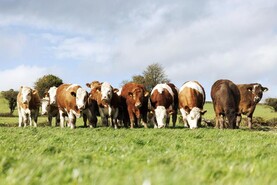Agricultural meteorological data from Met Éireann has put average soil temperatures across the country at 6.09°C, 35% higher than the 30-year average.
Dublin Airport recorded the lowest temperature at 4.8°C, while Valentia in Kerry has the warmest soil temperature at 7.6°C.
The data is averaged over the seven days up to last Wednesday 19 January. The average difference in soil temperature compared to the normal 30 year mean average is a staggering 1.7°C.
High soil temperatures at this time of year are important, as grass and other plants have the ability to grow and soil microbes and organisms will be more active, breaking down organic matter and releasing nitrogen and other nutrients in the soil.
When looking at and comparing soil temperatures, it’s important to make sure you are comparing like with like.
For example, the Met Éireann data is based on average soil temperature at 10cm deep. Others use soil temperature at 10cm deep at 9am each morning.
Soil temperature probes, which many farmers possess, usually take an average reading across the soil profile to 10cm. This will give a different reading of the soil temperature at 10cm only.
In terms of farming practice, higher soil temperatures mean there should be good utilisation of fertiliser or slurry applied to grassland soils.
While there is some rain forecast, the general trend is for a continuation of the mild weather conditions up to the end of next week.






 This is a subscriber-only article
This is a subscriber-only article










SHARING OPTIONS: